- Home
- Sue Monk Kidd
The Dance of the Dissident Daughter Page 17
The Dance of the Dissident Daughter Read online
Page 17
He is leaping from his chariot to console and love her. Ariadne’s face registers surprise, her lips parted as if saying, “Oh my! What’s this?” It’s obvious that the ship receding into the distance is her past and that in turning to meet the gaze of Dionysus, she is meeting her future.
The myth tells us that the two marry and create a deep and lasting love, that Dionysus gives her a crown as a sign of his devotion. She goes on to become leader of the annual sacred dance performed by the maenads, the dancing women who honor Dionysus. Along with him, she becomes enshrined in the Villa of Mysteries at Pompeii as the overseer of women’s mysteries, to be known as the wise mentor who initiates women into the feminine journey.
But what did all of this signify in the life and journey of a woman like me? I’d focused mainly on the stages of the myth that lead a woman out of the father-world and through the labyrinth, meditating little on Ariadne’s arrival in Naxos. But now, confronted unexpectedly with that part of the story, I went and sat on a nearby bench and tried to sort out the meaning.
I recalled that one of the dangers in leaving the realm of the old king is that in our desperation and pain we will create a savior “out there” because we cannot recognize our own strength, daring, creativity, and power. So if, like Ariadne, we find some external Theseus on whom to project the savior role, we will eventually face a moment of truth.
Theseus’s leaving suggested to me that the last of a woman’s dependence on male deliverers must be stripped away. She needs to see that the external Theseus is really an extension of the patriarchal father—another male figure upon whom she’s dependent.
Theseus’s departure forces a woman back completely upon herself. She learns that to become fully reconnected with her feminine soul, the projection must be withdrawn. Now she must set about the business of discovering within herself the daring, hero strength she saw in Theseus. In doing this, she renders herself independent of patriarchal values and judgments.
So here is Ariadne on Naxos—abandoned to herself, abandoned to new possibility.
But whatever could the arrival of Dionysus imply for a woman? I got up from the bench and wandered back to the book shop in the National Gallery, where I picked up a book on mythology. I leafed through the index for Dionysus. I was not surprised to find that he was the god of women, a god close to and inclusive of the feminine. One of the animals he was associated with was the snake—often a symbol of the Divine Feminine. Jean Shinoda Bolen indicates that as Dionysus traveled through Greece in his mythological travels, he called women away from their household hearths and looms, liberating them from conventional, narrow roles.29 He was also the god of dance, joy, creativity, spirit, and wine, the god of ecstasy.
I walked back to the painting. As I looked at the figure of Dionysus, it hit me that, unlike Theseus, who was a mortal man in the myth, Dionysus was an immortal god. In other words, he symbolized an inner figure. He represented something Ariadne must find within. As Jungian analyst Nancy Qualls-Corbett points out, at this point in a woman’s life, she can begin to appreciate the strength of the god within, who emerges at this crucial point without threatening her budding connection to her feminine nature.30
With the arrival of Dionysus, we meet a positive masculine force, one that supports women and the feminine from within, one that helps a woman manifest her new vision and voice in the world. Dionysus, I realized, is the opposite of the Minotaur.31 When a woman works consciously and diligently to slay her Minotaur, she makes a way for Dionysus to come.
I began to pace around in front of the painting, feeling excited. I realized that the arrival of Dionysus is a momentous time in a woman’s life. It is when she knows that she is beginning to find completion and wholeness in herself. And I couldn’t help feeling I was on the verge of this step myself.
I remembered that in the myth Ariadne and Dionysus are wed, symbolizing an inner marriage of the positive masculine and the conscious feminine. When these two aspects of ourselves come together within, we arrive at new wholeness, new completion. As C. G. Jung taught, “Wholeness . . . is not achieved by cutting off a portion of one’s being, but by integration of the contraries.”32 A woman who finds this integration can assume her own authority as a woman. She becomes a woman with a true feminine center and an inner masculine partner who is supportive and helpful. And no telling what sort of new, creative “children” could be born from such a union, I thought.
My husband had long since wandered off to see the rest of the paintings, and I found him now in a little sea of people in the next room, his head cocked in a funny way as he looked at a picture I couldn’t see. Looking at him, I realized that a woman who finds wholeness does not have to have an external man in order to be complete. She can choose this, but she is not dependent on it for her wholeness. But in the same moment, still staring at him, I also knew that I chose him with all my heart. He was a human man and I was a human woman, and here we were, both of us with all our faults, struggling along, moving on our parallel journeys. I knew I didn’t need him to be a Theseus or a Dionysus. He could be what he was.
That day in the museum, it seemed to me that I had at last landed on Naxos. Like Ariadne, I had left the father world and crossed over to a new place. Like her, I had watched the last ship sail, then turned, knowing that it was time to look within. So now what? I wondered if I could begin to find my own positive inner masculine while at the same time forging a connection with my feminine soul and allowing myself to be led by that connection. Could I bring together the deep splits inside, find healing, and tap new creativity? Could I begin the process of assuming my own authority as a woman? What, I wondered, would I discover on my Naxos?
Sandy was crossing the room, coming toward me. “The gallery is about to close and you’ve hardly seen anything,” he said.
I smiled.
PART THREE
Grounding
As I go into her, she pierces my heart. When I have reached her center, I am weeping openly. I have known her all my life, yet she reveals stories to me, and these stories are revelations and I am transformed.
Susan Griffin
Until women can visualize the sacred female they cannot be whole and society cannot be whole.
Elinor Gadon
As I left the museum and walked out onto Trafalgar Square. I had the sense that a new season of my journey was beginning. After a year and a half of initiation—moving with the tumultuous rhythms of dying and rebirth—it was time to ground myself in a new feminine place.
You know how you feel when you get off a boat that has been pitching around on the sea and the ground still seems to be moving under your feet? Inwardly I felt like that. I’d traversed a body of experience, riding the roils and swells of change, and while much change still remained, I’d moved through enough initiation that I could begin to anchor myself in the new place where I’d arrived.
I leaned against the massive lion statue in front of the museum while Sandy snapped a picture. Things around us swirled—people hurrying, London traffic jostling around the square, flurries of pigeons taking to the sky. It only heightened my sense of need to become grounded and moored. To meet that need, I knew I needed to sink my roots deep into Sacred Feminine experience, to deepen and fortify my budding relationship with my new female self and the Divine Feminine.
ENCOUNTERING GODDESS
We were driving, Sandy and I, on the “wrong” side of the road through English countryside, which undulated like a quilt of overwashed colors—heather greens, faded blues, browns paling into tan and chalk.
We were on our way from Oxford to Glastonbury when unexpectedly we found ourselves in the village of Avebury, gazing through car windows at a monumental stone circle spread through a sheep field. A circle like Stonehenge, only far larger. “What’s this?” I asked, amazed that these megalithic structures had appeared seemingly in the middle of nowhere.
“I have no idea,” said Sandy. “Wanna stop?”
I was already pulling on my co
at, reaching for the tourist book to see if I could identify the place.
“Listen to this,” I said as we pulled into a small parking lot set aside for visitors to the stone circle. “Avebury was a religious center dating back to the third millennium B.C.E. It says here that the arrangement of the stones may have represented the shape of the body of the Goddess.”
“Goddess?” asked Sandy. His eyebrows went up. Very high.
“Yes,” I said, smiling at the look on his face. “Goddess.”
The word no longer caused disquiet for me. My earlier anxiety had derived from the way the word had unfairly been associated with things base and sordid, from the long historical repression and despising of the Divine Feminine, and from the taboos against women seizing the power to name sacred experience from their own perspective. When I understood this and unloaded all that baggage off the word, I was left with a mere word, which pointed to a female Power of Being. But I sensed Sandy’s discomfort, so I tried to unpack the word for him, too.
I told him about some of the things I’d been reading for the last six months or so—the work of UCLA archeologist Marija Gimbutas, who’d studied and written about the Goddess-worshiping, earth-centered cultures of prehistory,1 as well as other books I’d read by female scholars, anthropologists, art historians, and thealogians who were recovering the rich history of Goddess, a history that had been lost or suppressed. And as I talked, I felt again the amazement that first washed over me as I began to discover that for many thousands of years before the rise of the Hebrew religion, in virtually every culture of the world, people worshiped the Supreme Being in the form of a female deity—the Great Goddess.
He seemed open and interested, and so as we walked toward the field with the circle of stones, I told him some particular things I’d learned about her. That she was known as the creator and sustainer of the universe who ruled over the rhythms and forces of nature. That she was all-wise, all-knowing, all-powerful, bringing both birth and death, light and dark. I explained that she was immanent, compassionate, ever-nourishing, associated with earth, fertility, and sexuality, but also a transcendent being who bestowed order, justice, and truth.
“But weren’t there a lot of Goddesses?” he asked.
“She certainly had lots of forms and names,” I said, and my mind returned to the Minoan Snake Goddess of Crete, represented by a woman holding a snake in each hand—the image I’d discovered through my dreams.
“So what happened to her?” Sandy wanted to know.
We had reached the field and began to walk now along an avenue of wide-spaced stones. I felt very moved inside, being in this place. I thought about his question, about the global phenomenon that had taken place probably beginning in the third millennium B.C.E., some kind of patriarchal revolution that spanned around 2500 years, during which there was a massive shift from female Goddess to male God.
“She disappeared,” I said. “In some cases she was conquered, sometimes violently by cultures worshiping a male sky God. Basically she went through a series of demotions, as the male God ascended, until finally she got demoted out of sight. Not only that, but her memory was maligned, distorted, and suppressed. She was hardly mentioned in history books.”2
We walked on in silence. I was thinking how her passage into oblivion had happened not only historically, but also deep within the psyches and consciousness of human beings. With her disappearance came a sweeping demotion in women’s status. Concepts of female inferiority and subordination began to develop in earnest.
Over the last few months, this untaught history had become a lump in my throat, a forgotten piece of my female heart that had begun to beat again. Now here in the stone circle I felt it even more, like a sad, sad sweetness, like a sorrow and a hope melded into one.
The light was soft and dimly fogged as it can be only in England, so that looking at the stones was like gazing through a steamed window. I walked through the field with a weight of longing and love lodged in my chest, like a cumulus cloud ready to burst into rain and thunder after a long drought.
I moved from one stone to another placing my hand flat against their surfaces, the same way I had moved around the circle of trees placing my hand flat against the trunks. One stone had a hollow place with a white votive candle sitting inside it. The candle had been lighted recently, for the wax was still warm.
As Sandy scouted for high ground in order to take a picture, I fished in my purse for the hotel matches I’d picked up as a souvenir, struck one, and lit the candle. A few minutes later, from somewhere a flute began to play. Clear, pure Celtic notes floated in the air behind me. I looked around to see a woman on a knoll about forty yards away, her head weaving as she piped the music.
Other tourists turned and stared. No one seemed to have any idea who she was or why she was there playing the flute, but I knew somehow that she was a woman like myself, a woman with the Sacred Feminine full to bursting in her chest, and that she was the one who’d lit the candle earlier.
In the haze-blown light with the notes of the woman’s music in the air, the fullness inside me broke. Divine Feminine love came, wiping out all my puny ideas about love in one driving sweep.
Today I remember that event for the radiant mystery it was, how I felt myself embraced by Goddess, how I felt myself in touch with the deepest thing I am. It was the moment when, as playwright and poet Ntozake Shange put it, “i found god in myself / and i loved her / i loved her fiercely.”3
I could not have distinguished then the difference between discovering the ancient Goddess and discovering Goddess within myself. It was too soon. I knew only that in some deep way I had encountered her.
Sandy walked over, looked at the burning candle, at my eyes full of tears, then at the woman still playing her flute. Later that moment would remind me of a line in the play Julian, about the Christian mystic Julian of Norwich: “Though many thought she had lost her wits, I knew that she had found her soul.”4
WHY A FEMININE FORM FOR THE FORMLESS?
One hot day in July not long after returning from England, I was sitting in my study reading when I came upon this statement by Vanderbilt theologian Sallie McFague: “God is she, he and neither.”5 As I pondered it, the statement brought back what I had always known as true—the genderless, formless nature of the Divine.
I was aware that Jewish and Christian theologians point out that God is genderless. The ultimate ground of being, the Divine One, is neither male nor female. Anne E. Carr says, “No image or symbol is an adequate ‘picture’ of God.”6 In the Bible God names God, saying, “I am that I am.” The Absolute Being simply is. It participates in the form or symbol; it is in or behind the picture, but it always transcends them.
The question then occurred to me: Well, if that’s so, if the Divine is ultimately formless and genderless, what’s the big deal? Why all this bother?
The bother is because we have no other way of speaking about the Absolute. We need forms and images. Without them we have no way of relating to the Divine. Symbol and image create a universal spiritual language. It’s the language the soul understands.
And yet—and here was the crux—the images that have pervaded our speech, thought, and feeling about the Divine have told us the Divine is exclusively male. They have told us there is only one form and that form is masculine. Indeed, the image, language, and metaphor of God as male has been used so exclusively, for so long (about five thousand years) that most people seem to believe God really is male.
McFague points out that when only one image is allowed to serve as the grid for speaking about God, it becomes idolatrous. It comes to be viewed not as symbol, but as fact, as an actual description.
I’d read Paul Tillich’s work years before and accepted his view that the transcendent always transcends every symbol used to describe it, that a symbol may point to God or participate in the reality of God, but that God cannot be identified as that. Tillich pointed out the tendency of religions to substitute symbols for the divine itself
, which he referred to as a tendency toward idolatry.7
My friend and mentor Dr. Beatrice Bruteau once described it to me like this: The Absolute Reality, the I Am, can be likened to a dancer. And the forms that the Absolute takes can be likened to the dances. The Absolute, she said, dances many dances, in a variety of movements that are constantly giving way into others. When we see the dance, the dancer takes on expression, shape, immediacy, presence, and meaning for us. We can observe the relationship of the dance to the dancer, and we understand that the choreography is infinite. We cannot look at just one movement or one dance and say, that is the dancer.
That day with these weighty thoughts spinning in my head, I reaffirmed to myself the deep, formless, indescribable nature of the Divine. But I also affirmed the human need for forms, for dances or images that express the Divine. And I realized that if we were going to meet that need without being idolatrous, and do it in an egalitarian and just way, we must recover a Divine Feminine.
So, why a feminine form for the formless?
I sat at my desk, took out my journal, and scrawled that question across the page. Then I tried to unravel, solidify, understand all the tangled reasons why I was doing what I was doing, why it was important to recover the Divine Feminine—not just for me, but for my daughter, my mother, all the women out there.
What reasons were there for recovering her besides the mystery and love she ignited in the female heart, besides all those unsayable reasons that lived in a woman’s soul?
I tried to get pragmatic.
First I noted that the lack of a divine female image supported an imbalance in our consciousness that diminished our wholeness as persons. The feminine goes underground in our psyches just as it does in our God. When this happens we exclude, overlook, and undervalue the feminine within ourselves and in the world around us.

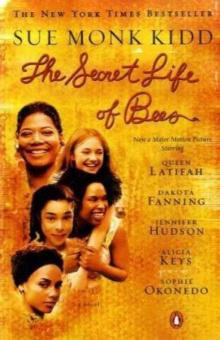 The Secret Life of Bees
The Secret Life of Bees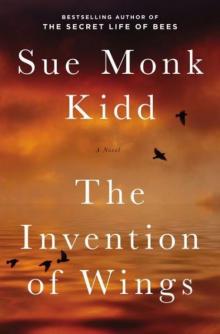 The Invention of Wings
The Invention of Wings Traveling With Pomegranates
Traveling With Pomegranates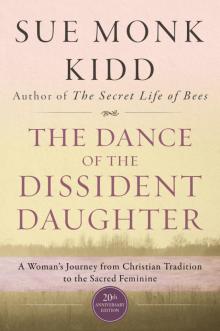 The Dance of the Dissident Daughter
The Dance of the Dissident Daughter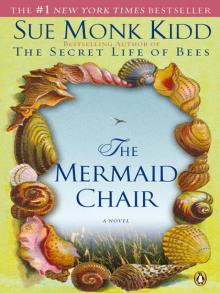 The Mermaid Chair
The Mermaid Chair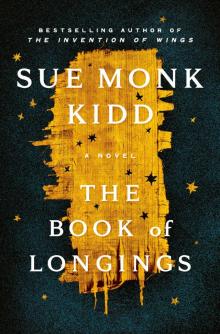 The Book of Longings
The Book of Longings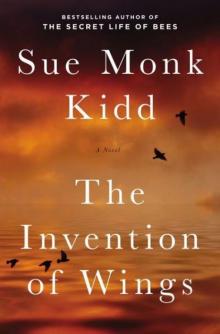 The Invention of Wings: A Novel
The Invention of Wings: A Novel The Invention of Wings: With Notes
The Invention of Wings: With Notes